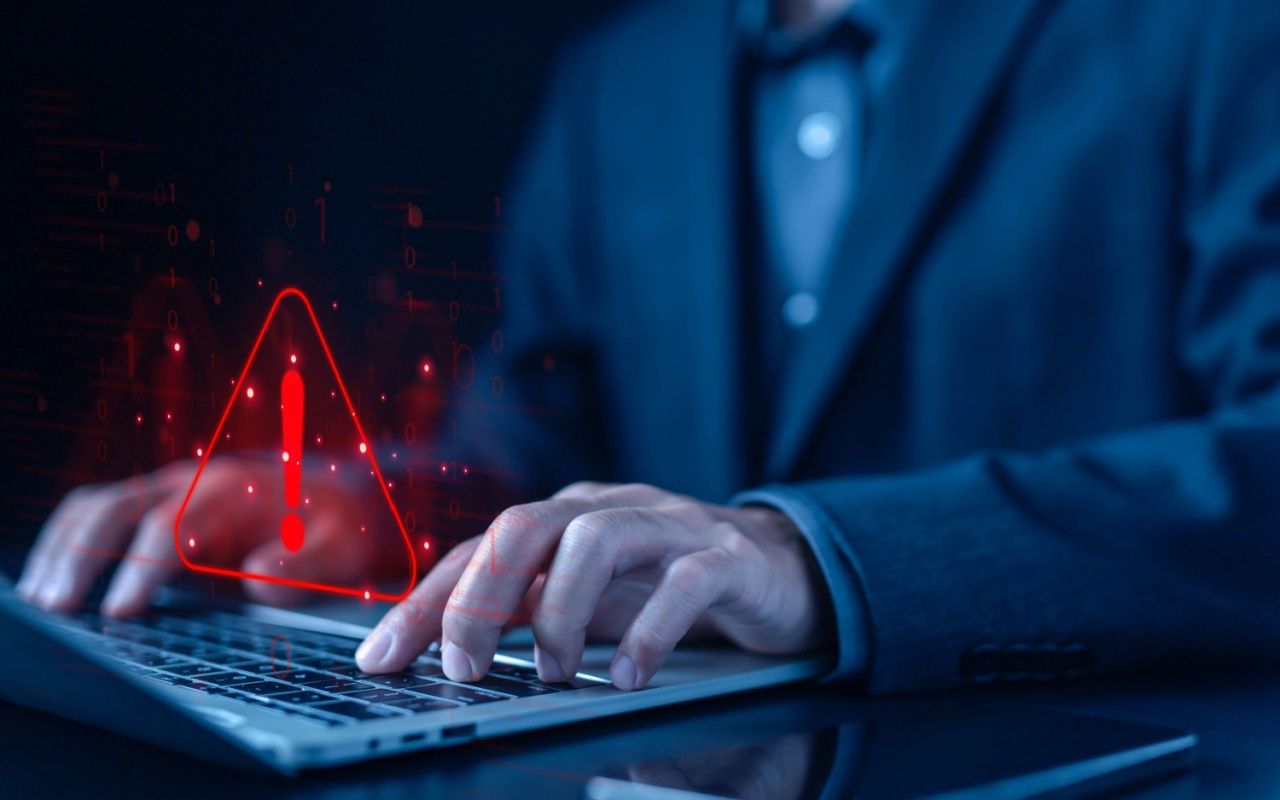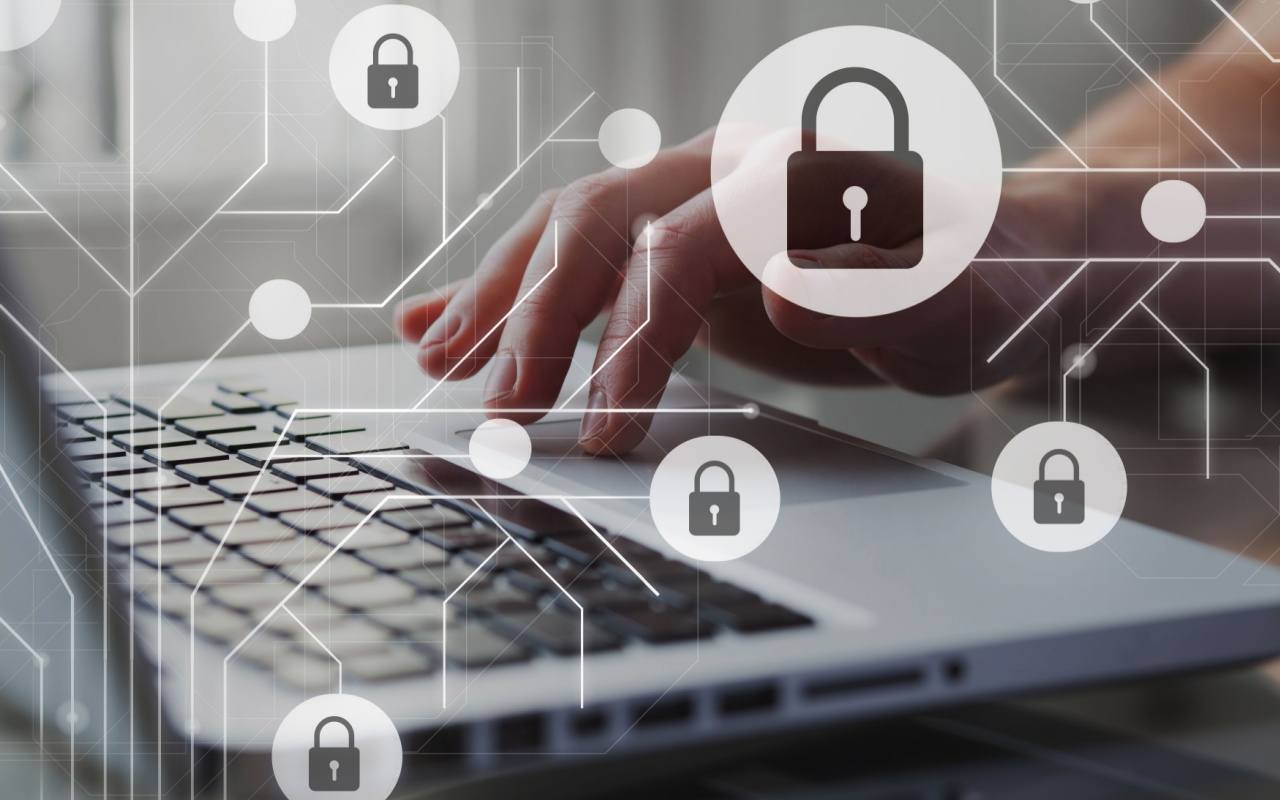
Spyware – what is it and how can you protect your company?
Spyware is a type of malicious software that can compromise the security of personal and corporate information. It installs itself on devices without the user’s knowledge and tracks online and offline activity to collect sensitive data.
Unlike other forms of malware, spyware operates in a stealthy manner, avoiding detection. It can record keystrokes, capture images of your screen, monitor your browsing history, and even activate your device’s webcam or microphone.
For you, as an entrepreneur or employee, spyware poses a major risk. It can compromise confidential data, leading to significant financial losses and severely damaging your company’s reputation. In addition, it consumes system resources, slowing down your work and reducing productivity.
The main concerns include the theft of sensitive corporate information, unauthorized access to the internal network, direct or indirect financial losses, and compliance and regulatory risks. Understanding how spyware works and implementing appropriate protection measures should be a priority for you and your company.
Types of Spyware and How They Work
Spyware comes in various forms, each with its own characteristics and methods of operation. Here are some of the most common types you should be aware of:
- Keyloggers: These record every keystroke you press, potentially capturing passwords, login information, and other sensitive data you enter.
- Banking Trojans: Specifically target your financial information, attempting to gain access to your company’s bank accounts.
- Infostealers: Scan your device for various types of personal and corporate data, from confidential documents to contact lists.
- Adware: While it may seem less harmful, this type of spyware displays unwanted ads and tracks your online behavior, potentially compromising the privacy of your online activity.
- Cookie trackers: Monitor your browsing activity, collecting information about your online preferences and habits, which can be used for targeted advertising or, in more serious cases, profiling.
- Mobile spyware: It specifically targets phones and tablets, and can access a wide range of personal and corporate data stored on these devices.
Spyware generally works by infiltrating your device, often hidden in other seemingly harmless programs or by exploiting security vulnerabilities. Once installed, it runs in the background, collecting information such as your passwords, company banking details, messages and even your location. This data is then transmitted to attackers over the internet, putting you and your company’s security at risk.
Ways by which devices can be infected with spyware

Photo source: Shutterstock.com
As an entrepreneur or employee, it’s important to understand the ways spyware can get onto your and your colleagues’ devices. Some of the most common infection methods include:
- Unsafe downloads: When you download free or cracked software from unknown sites, you risk bringing spyware onto your device. These programs can contain hidden malware, ready to install along with the desired application.
- Suspicious emails and messages: Opening attachments or clicking on links in unknown emails or messages can lead to spyware infection. Attackers often use social engineering techniques to convince you to click on malicious links.
- Compromised websites: Browsing unsafe or compromised websites can expose your device to spyware. These sites may contain malicious code that installs itself automatically when you visit the page.
- Unofficial browser extensions and mobile apps: Installing browser extensions or mobile apps from unofficial sources can be a direct route to spyware infection. These add-ons may have hidden spying functionality.
- Public Wi-Fi networks: Connecting to unsecured public Wi-Fi networks can expose your device to attacks, allowing hackers to intercept your data or install spyware.
- Bundleware: This method involves attaching spyware to other programs that you intentionally download. Spyware installs itself in the background, without your knowledge, when you install the main program.
To reduce the risk of infection, it is essential to be vigilant and adopt solid security practices. Only download software from official and trusted sources, keep your operating system and applications up to date, and be cautious of links and attachments in unknown emails or messages. Using a robust security solution with anti-spyware protection is also important to protect your devices and company data.
Signs that your company devices may be infected with spyware
As a manager or IT professional responsible for your company’s cybersecurity, it is essential to recognize the signs of a possible spyware infection on your organization’s devices. Early detection can prevent data loss and security breaches. Here are some common signs that may indicate the presence of spyware:
Reduced performance: If you notice a significant slowdown in systems, especially on devices that previously worked without problems, this may be a sign of a spyware infection.
Unexpected pop-up ads: Frequent pop-up ads or browser redirects to unknown sites may indicate the presence of spyware, especially adware.
Settings changes: Unexplained changes to default settings, such as changing your browser’s homepage or the appearance of new toolbars, may be signs of an infection.
Increased data traffic: A sudden increase in data traffic or bandwidth usage may indicate that spyware is transmitting information to external servers.
Security software issues: If antivirus programs or other IT protection solutions suddenly stop working, malfunction, or can no longer be updated, spyware may have compromised them to hide its presence and activity.
Unusual activity: Look for activity on devices when they are not in use, such as a webcam LED turning on by itself or a hard drive working intensively for no apparent reason.
It is important to train employees to be alert to these signs and report any suspicious behavior on their devices immediately. Implementing network monitoring solutions can also help detect suspicious activity associated with spyware early.
Consequences of a Spyware Infection
The impact of a spyware infection can be major, jeopardizing both the daily operations and the long-term sustainability of your company. This type of malware has the ability to access and collect sensitive information, including business strategies, intellectual property, financial data, and personal details of customers. Such a security breach can generate serious legal and financial consequences, affecting the trust of partners and the stability of the organization.
Cybercriminals can exploit stolen data to access the company’s bank accounts or to carry out fraudulent activities on its behalf or on behalf of its customers. Such attacks can generate considerable financial losses and, in some cases, can compromise the economic stability of the organization.
In addition, spyware consumes the resources of infected systems, causing significant slowdowns in devices. This performance degradation can directly affect employee productivity and the operational efficiency of the company.
Once spyware enters the IT infrastructure, it can create vulnerabilities that facilitate further cyberattacks, exposing the entire network to additional risks.
In extreme scenarios, compromised devices can become completely inoperable, causing business interruptions and significant financial losses.
If spyware manages to steal intellectual property or trade secrets, the company can lose the competitive advantage it has built up over time, affecting its market position.
A security breach caused by spyware can lead to non-compliance with data protection regulations, which can attract substantial fines and other legal sanctions.
Furthermore, eliminating an infection and strengthening security measures involves significant investments of financial and human resources, which could be more efficiently allocated to business development.
Given these major cyber risks, implementing solid IT security measures should be a priority for you and your management team. Cyber Insurance against cyber attacks is not an expense, but an essential investment for the future and success of your business.
Effective Strategies for Preventing Spyware Infections in Organizations

Photo source: Shutterstock.com
To prevent spyware infections, it is essential to implement robust cybersecurity strategies. A fundamental first step is to install and constantly update reliable antivirus and anti-malware software on all company devices. These solutions must be kept up to date to benefit from the latest threat definitions. In parallel, implementing a strong firewall at the network level can help block malicious traffic and prevent communications between spyware and control servers.
Employee education plays an important role in preventing cyberattacks. Organizing regular training sessions can help them recognize threats. It is important that they are aware of the risks of accessing suspicious links or downloading files from unsafe sources. At the same time, careful management of user privileges by limiting access to only the necessary resources can significantly reduce the risks of infection.
Another essential aspect is keeping all operating systems and applications updated with the latest security patches, to eliminate vulnerabilities that can be exploited by attackers. Network segmentation is also an important measure, as isolating critical systems and restricting access between different segments can prevent the spread of a possible infection.
Implementing two-factor authentication provides an additional layer of security, making it more difficult for unauthorized access even if credentials are compromised. In addition, continuous network monitoring with specialized tools allows for the rapid detection of suspicious activities, ensuring a prompt response to threats.
In addition to these measures, performing regular security audits helps test the resilience of systems and identify vulnerabilities. In the event that an infection does occur, a well-structured incident response plan is essential. This should include clear procedures for isolating and removing spyware, as well as for quickly recovering affected systems.
By implementing these strategies and maintaining a proactive approach to cybersecurity, you can significantly reduce the risk of spyware infections and more effectively protect your organization’s sensitive information. For complete protection, also consider IT professional liability insurance, which can provide financial coverage in the event of security incidents.
Eliminating Spyware from Your Company’s IT Infrastructure
If you suspect or have confirmed the presence of spyware in your company’s IT infrastructure, it’s important to act quickly and methodically. Here are the steps you should follow to effectively eliminate this threat:
- Isolating affected systems: The first step is to isolate devices suspected of being infected. Disconnect them from the network to prevent the spyware from spreading to other systems.
- Detailed scanning: Use trusted anti-spyware solutions to perform comprehensive checks of all devices in the company. Make sure your software is up to date with the latest threat definitions to effectively detect and remove any form of spyware.
- Update and patch: Before reconnecting devices to the network, make sure all operating systems, applications, and security solutions are updated to the latest available versions.
- Clean up the registry and temporary files: On Windows systems, clean up the registry and remove temporary files that could be hiding spyware components.
- Reset passwords: After removing the infection, change the passwords for all accounts, especially those with access to sensitive information.
- Configure firewalls: Adjust firewall settings to block suspicious communications and prevent reinfection.
- Implement DNS filtering: Configure DNS filtering to prevent access to known malicious websites.
- Use a web proxy: Implement a web proxy to scans and filters traffic, providing an additional layer of protection.
- Employee Training: Conduct training sessions to educate employees about spyware threats and appropriate security practices.
- Continuous Monitoring: Implement network monitoring solutions to quickly detect any suspicious activity or reinfection attempts.
By maintaining an ongoing spyware protection strategy, you not only significantly reduce the risk of infection, but also build a robust security culture within your organization. This will better protect your sensitive information, maintain the trust of your customers and business partners, and ensure the continuity of your company’s operations in the face of ever-evolving cyber threats.
References
1. Symantec. (2021). Internet Security Threat Report.
2. Ponemon Institute. (2021). Cost of a Data Breach Report.

